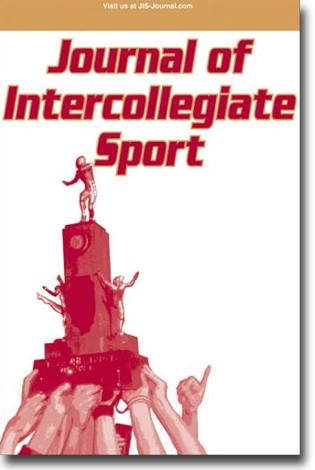The Journal of Intercollegiate Sport (JIS) is a peer-reviewed, open access journal that focuses on the study of intercollegiate sport. JIS is the premier source for research and best practices in the field of intercollegiate sport. JIS publishes original research and review articles that examine the impact of sport in college and university communities, including topics such as sport policy, sport management, sport finance, sport law, sport marketing, and sport sociology. The journal also features book reviews, editorials, and commentaries from experts in the field. JIS is a valuable resource for sport administrators, academics, and practitioners, as well as those interested in intercollegiate sport.
History and Overview of Intercollegiate Sport
Intercollegiate sport is a form of organized competition between universities and colleges. It has been around since the late 19th century and has grown in popularity and complexity over the years. Intercollegiate sport includes a variety of disciplines such as football, basketball, track & field, swimming, rowing, volleyball, and many other sports.
The National Collegiate Athletic Association (NCAA) is the governing body of intercollegiate sport in the United States. The NCAA regulates the rules and regulations that govern all intercollegiate sports, including the eligibility of athletes, recruiting, and other matters. In addition to the NCAA, there are also several other governing bodies that oversee intercollegiate sport in other countries.
Intercollegiate sport has become an important part of college life, as it provides an opportunity for students to showcase their athletic abilities and compete against other universities. Additionally, it provides students with a great opportunity to network and socialize with other students. Furthermore, intercollegiate sport has been known to help promote academic excellence, as it gives athletes the chance to demonstrate their commitment to academics in addition to their athletic abilities.
In recent years, intercollegiate sport has become increasingly popular and competitive. Schools are now competing for the best athletes, and these athletes are becoming more valuable to universities. As a result, intercollegiate sport is becoming more and more important to universities, as it provides an opportunity to showcase their school and attract students from all over the world.
Intercollegiate sport provides a variety of positive benefits, from promoting academic excellence to helping athletes build their network and career prospects. It is an important part of college life and should be embraced and enjoyed by all.
Benefits of Intercollegiate Sport
Intercollegiate sport is a powerful tool that can be used to bring about positive change and promote physical and mental health in college students. It provides students with an opportunity to socialize and bond with their peers, which can lead to increased academic performance and improved mental wellbeing. Furthermore, participation in intercollegiate sport can help to build character traits such as leadership, teamwork, and resiliency that are applicable to all areas of life.
In addition to physical and mental health benefits, participation in intercollegiate sport also provides students with an opportunity to develop a sense of pride and loyalty to their school. Participating in intercollegiate sport encourages students to take pride in their school’s achievements and to build strong relationships with their teammates and coaches. This sense of community and belonging can be beneficial for students as they transition into the working world.
Intercollegiate sport can also increase college enrollment and retention rates, as students are more likely to stay in college if they have a sense of pride and belonging. Furthermore, participation in intercollegiate sport can lead to career opportunities, such as internship or job offers, as well as professional development and networking opportunities.
In conclusion, intercollegiate sport can offer many benefits to college students. It can provide an opportunity for physical and mental health, character development, and a sense of pride and loyalty to the school. Additionally, it can lead to career opportunities and increased college enrollment and retention rates. Therefore, intercollegiate sport is an invaluable tool for students and should be encouraged and supported.
Challenges Faced by Intercollegiate Sport
Intercollegiate sport has long been a source of pride and camaraderie for college and university students. While many students have fond memories of their time participating in intercollegiate sports, the reality is that there are many challenges that these athletes face. From financial burdens to mental health struggles, intercollegiate sport can be difficult to navigate.
Athletes must balance their academic commitments with their sport requirements, often dedicating long hours to training and competition. This can lead to fatigue and burnout, as these athletes are often expected to maintain a high level of performance on a consistent basis. Additionally, injuries sustained during competition can have a negative impact on athletes’ physical and mental health.
Financial constraints are another major challenge for intercollegiate athletes. Lack of funds can lead to inadequate training and nutrition, which can put athletes at greater risk of injury and underperformance. Many athletes also struggle to keep up with the cost of equipment and travel expenses associated with intercollegiate sport.
Finally, athletes often face a lack of support from their peers, which can take a toll on their mental health. For example, athletes may be subject to hazing or bullying from teammates, or feel isolated due to language and cultural barriers.
Overall, intercollegiate sport can be a rewarding experience, but it also poses many challenges for athletes. To ensure the best outcomes, athletes must be prepared to navigate the physical, financial, and mental health obstacles that may arise. With the right support and resources, however, these challenges can be overcome and athletes can enjoy a safe and successful intercollegiate sports experience.

Regulations and Governance of Intercollegiate Sport
Intercollegiate sport is regulated by a combination of national, state, and local governing bodies. Each of these entities has established their own set of rules and regulations to ensure the safety and well-being of participants and to create fair and equitable competition. The National Collegiate Athletic Association (NCAA) is the primary governing body, providing oversight to the hundreds of college and university athletic programs across the country.
At the state level, there are organizations such as the National Federation of State High School Associations (NFHS) and the National Junior College Athletic Association (NJCAA). These organizations set standards for competition, eligibility, and other aspects of intercollegiate sport.
At the local level, conferences and divisions are created to provide structure to the collegiate sports system. Conferences are often divided into divisions based on competitive levels, such as Division I, II, and III. These divisions provide a framework for establishing rules and regulations that are specific to each division.
The regulations and governance of intercollegiate sport also include a variety of policies and procedures that are designed to protect student-athletes and ensure the integrity of the game. These include drug testing, academic eligibility requirements, recruiting rules, and punishments for violations.
The regulations and governance of intercollegiate sport are constantly evolving as the sport continues to grow and develop. It is important for coaches, administrators, and student-athletes alike to stay up-to-date on the latest rules and regulations to ensure that they are in compliance. The Journal of Intercollegiate Sport is an invaluable resource for staying informed on the ever-changing landscape of collegiate sports.
The Economic Impact of Intercollegiate Sport
Intercollegiate sport has become an integral part of the college experience, both for student-athletes and fans alike. It has also come to play an increasingly important role in the economics of higher education. From ticket and merchandise sales to television rights and sponsorships, the financial impact of intercollegiate sport on universities has been substantial.
The NCAA estimates that Division I schools alone generate $12.9 billion in annual revenue from all sources related to intercollegiate sport, including ticket sales, merchandise sales, television rights, sponsorships, and more. This revenue helps fund athletic programs, scholarships, and facilities, as well as general operating costs. It also supports university research and academics, giving students the opportunity to pursue their educational goals.
In addition to the financial benefits associated with intercollegiate sport, universities also benefit from the intangible benefits of increased visibility and alumni engagement. College sports have the potential to bring huge exposure to universities, as fans across the country tune in to watch their favorite teams. These increased levels of visibility and engagement can lead to increased donations from alumni and other supporters, further boosting a university’s financial strength.
The economic impact of intercollegiate sport cannot be understated. It provides universities with a significant source of revenue, helps to fund research and academic initiatives, and brings increased visibility and engagement to universities. As universities continue to increase their investments in intercollegiate sport, the economic benefits will only become more pronounced.
Future of Intercollegiate Sport
The future of intercollegiate sport is a source of great fascination to many. As the world continues to become increasingly competitive, the importance of athletic ability and sport for college students is undeniable. With the right guidance and dedication, college athletes can take their sport to the highest level and achieve success in the real world. As the number of intercollegiate sporting events continues to increase, it is necessary to look at the impact it has on the overall college experience and the future of intercollegiate sport.
The growth of intercollegiate sport has provided tremendous opportunities for students to pursue their dreams and compete at the highest level. It has also created a new set of challenges, such as the need to make sure that athletes are given the best possible training and are following the rules and regulations of the sport. In addition, the increased competition has led to the need to ensure that college athletes are given the appropriate resources to help them succeed.
In the future, intercollegiate sport will continue to evolve and provide an exciting platform for the next generation of athletes. With the right guidance and support, college athletes can continue to make an impact on the sports world. With the right resources and dedication, athletes can reach their goals and make a positive impact on their college experience and the future of intercollegiate sport.
FAQs About the Journal Of Intercollegiate Sport
1. What topics does the Journal of Intercollegiate Sport cover?
The Journal of Intercollegiate Sport is a peer-reviewed journal that covers a broad range of topics related to intercollegiate sport, including physical education, sport management, sport psychology, sport sociology, sport medicine, and sport marketing.
2. How often is the Journal of Intercollegiate Sport published?
The Journal of Intercollegiate Sport is published quarterly, with each issue focusing on a specific theme.
3. How can I submit an article for publication in the Journal of Intercollegiate Sport?
Authors interested in submitting an article for publication in the Journal of Intercollegiate Sport should visit the journal website and review the submission guidelines.
Conclusion
The Journal of Intercollegiate Sport is an invaluable resource for anyone interested in the world of intercollegiate sports. It provides comprehensive coverage of all aspects of intercollegiate athletics, from research and best practices to legal issues and health concerns. Its articles provide valuable insight into the complex and often controversial world of college sports, and its editorial board ensures that only the highest quality scholarship is published. As a result, the Journal of Intercollegiate Sport is an essential resource for anyone looking to stay informed on the state of intercollegiate athletics.



